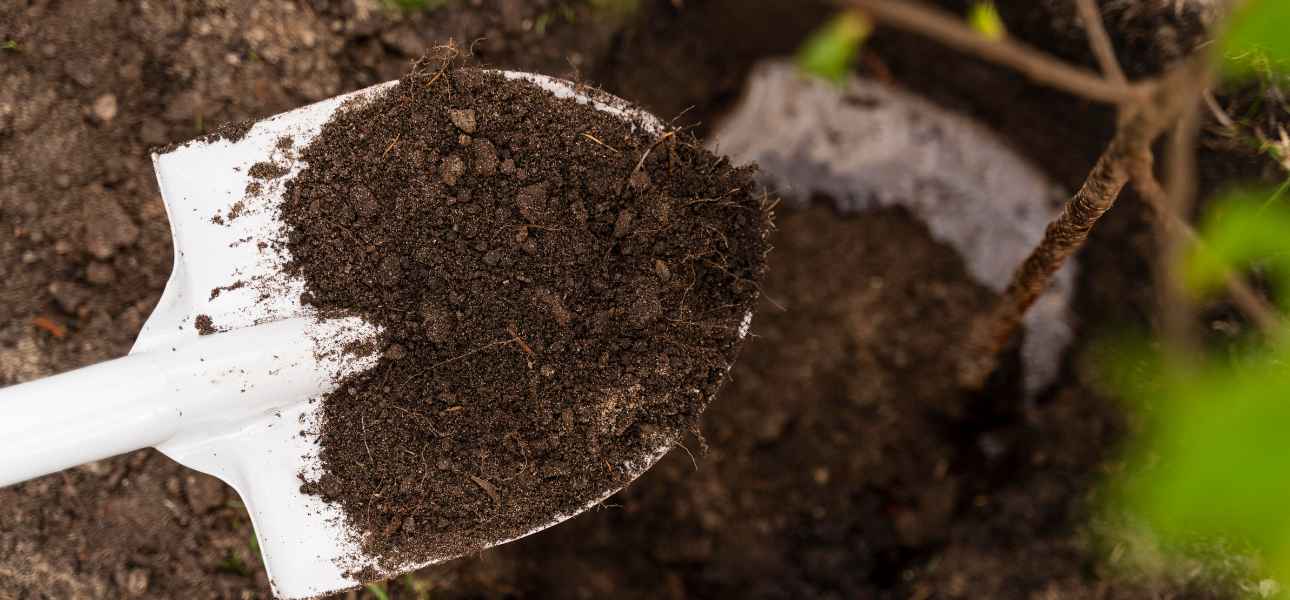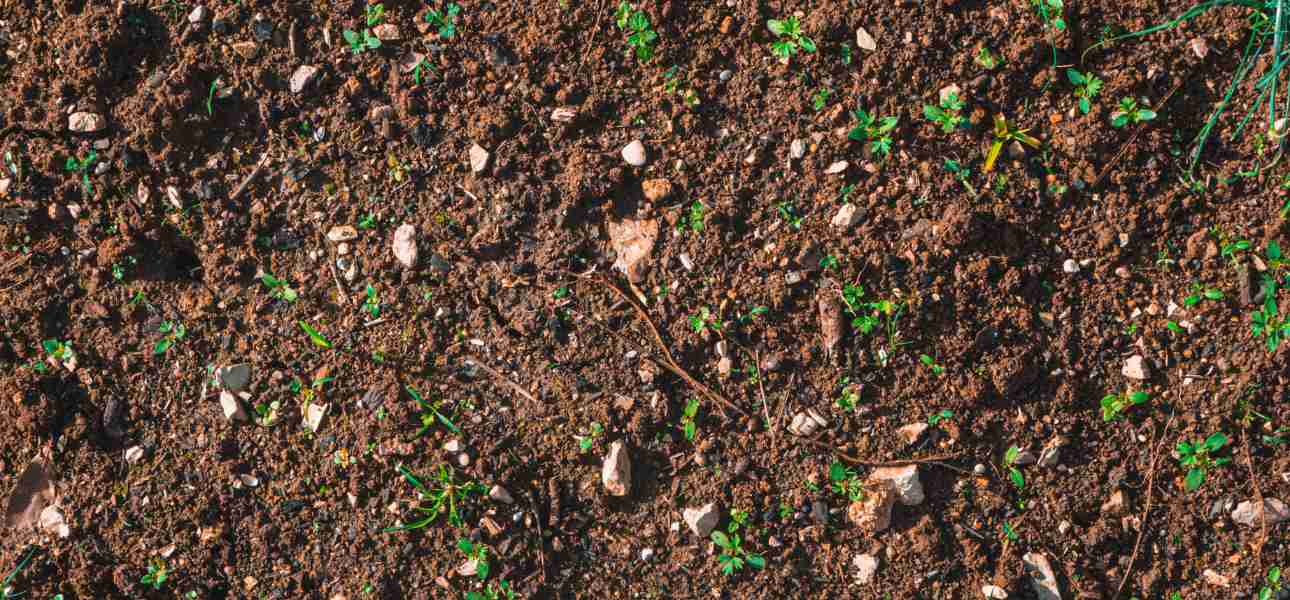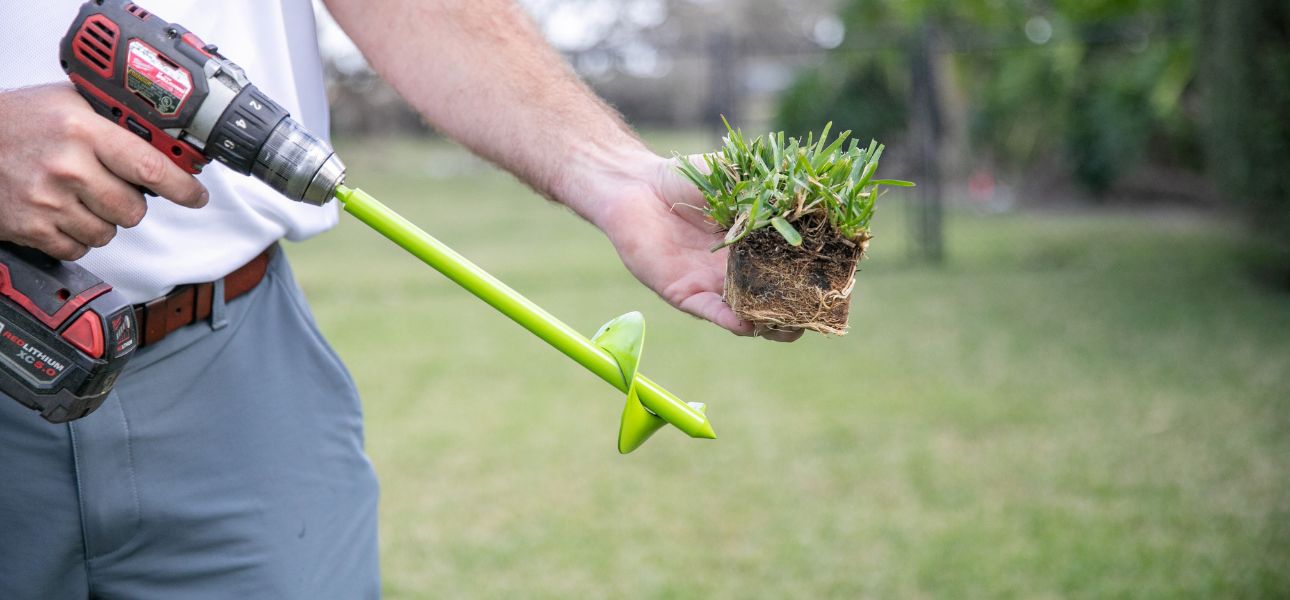How to Improve Drainage in Clay Soil

Clay soil has a bad reputation for having poor drainage due to its dense, sticky texture that can harden into an impenetrable mass when dry. With its small and dense particles, clay soil is particularly prone to compaction, leading to drainage issues that can complicate your gardening efforts.
Despite these challenges, clay remains an essential soil component, with its superior nutrient retention and moisture-holding capabilities than sand or silt. Fortunately, with some soil amendments, you can improve your soil structure, transforming it from sticky and dense to fertile and conducive to hosting new grass plugs.
What Soil Type is Best for Grass?
Soil can be categorized into three primary types—sand, silt, and clay—based on the dominating size of the particles within the soil.
Sand is the largest soil particle. Sandy soils drain well, but that also means they don’t retain water well and dry out easily.
Silt falls between sand and clay, with particles that are smaller than sand but larger than clay. Silt soils can retain more nutrients and water than sandy soils, making them more fertile.
Clay has the smallest soil particles. Clay soils are often called heavy soil because they can get sticky when wet. They effectively retain water and can be very fertile.
Generally, your soil should be composed of a balanced mixture of sand, silt, and clay to get a healthy lawn. Called loam soil, this mixture holds moisture and drains well to prevent waterlogging. Loam soil retains essential and facilitates good airflow, making it the best type of soil for grass growth.

How to Improve Clay Soil
With its dense and poorly draining nature, clay soil can hinder healthy plant growth. Introducing soil amendments is a key practice to improve its structure and improve drainage. However, there are additional strategies you can take to create a healthier growing environment for your grass plugs.
Soil Test
Clay soils are nutrient-rich, but if the soil is too acidic or too alkaline, these nutrients will not be available for uptake. You can gauge the pH of your soil accurately with a soil test kit or by sending a sample to a testing lab. With a comprehensive soil analysis, you can also receive tailored recommendations on how to adjust your soil to create optimal growing conditions for your plants.
Add Organic Matter
Incorporating organic matter into clay soil delivers a multitude of benefits including lightening the soil texture, relieving compaction, adding nutrients, and improving drainage and aeration to make space for plant growth.
Compost is rich in organic matter and introduces larger particles to the clay. Its porous nature allows it to hold the right amounts of water while allowing adequate air circulation and water drainage. Adding to its benefits is that compost is a valuable food source for beneficial microorganisms, increasing biological activity. As it decomposes, it further enriches the soil and improves soil structure over time.
In addition to compost, other organic amendments include dried leaves and livestock manures.

Aerate
Aerating clay soil can help break up the solid sheets of clay, improve drainage, alleviate compaction, and create an environment conducive for beneficial soil microorganisms. By introducing air pockets into the dense clay, you create spaces for water to infiltrate, preventing waterlogging and promoting healthier root growth.
You can use a grass plug tool to function as an aerator—dig holes as deep as possible, starting at one end of your lawn and working backward to avoid compacting the soil. While aeration is usually an as-needed practice, clay soil particularly benefits from regular aerating, ideally 1-2 times a year—once in the late fall, and again in the spring before planting.
Mulch
Factors like rain, foot traffic, and other lawn activities can pack down bare soil. By mulching with organic materials like grass clippings, shredded leaves, or compost, you can protect your soil from compaction and erosion, and consequently suppress weed growth.
Mulching is particularly beneficial during the growing season to provide a steady supply of nutrients and sustained improvement in soil structure, as well as during rainy periods to keep the grass from being susceptible to fungal issues.
Contour Your Lawn
Contouring your lawn is a practical solution for managing water and improving drainage, particularly in clay soils prone to water retention. For example, raised beds can effectively reduce drainage issues by encouraging water runoff. Size the beds appropriately so you can reach the middle without stepping onto the bed to prevent compaction.
You can also contour your lawn to create alternating high peaks and low valleys. These contours can manage water effectively, with low spots allowing water to collect and high points providing well-drained planting areas. These measures allow you to optimize water distribution, minimize waterlogging, and create a functional outdoor space that thrives even in challenging soil conditions.
Soil pH and Nutrient Availability
In addition to the type of soil, and its ability to hold nutrients and moisture, another crucial soil characteristic to consider when planting grass plugs is pH—the measure of soil acidity or alkalinity. Most warm-season grass varieties thrive in nutrient-rich, slightly acidic to neutral soils with pH levels ranging from 5.5 to 7.0.
However, as mentioned earlier, if the soil pH is either too acidic or too alkaline, it can render certain nutrients unavailable, consequently affecting the plant’s ability to absorb nutrients effectively. These imbalances can lead to nutrient deficiencies that hinder grass growth.
Soil composition forms the foundation for a healthy, dense, green lawn. When it lacks essential nutrients, proper pH levels, or adequate drainage, it poses a significant threat to the overall health of your grass. Poor soil conditions may result in issues such as stunted growth, discoloration, bare patches, and susceptibility to diseases.

Takeaway
Despite the challenges of clay soil, achieving healthy grass growth is possible with the right soil amendments and practices. By incorporating a few adjustments and adopting proper techniques, you can create optimal conditions for successful grass plug planting.
For a variety of grass plugs suited to your specific needs, visit the Try SodPods® website today.

